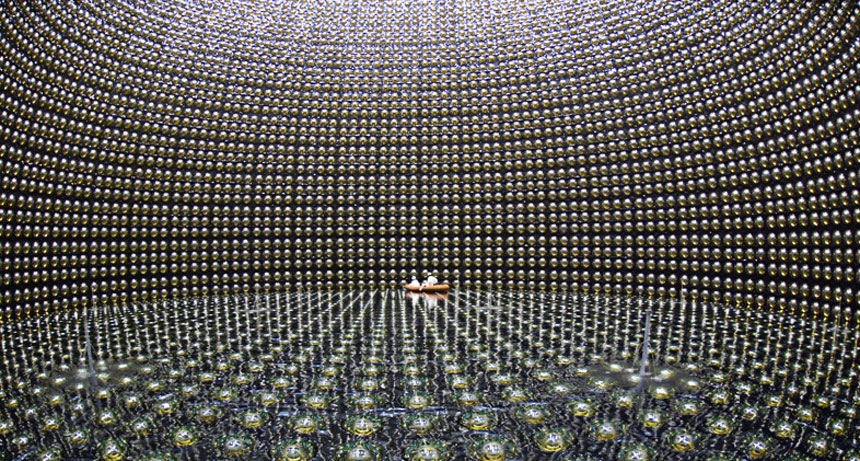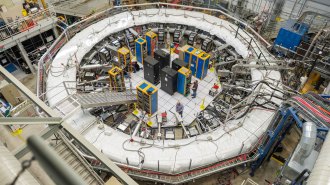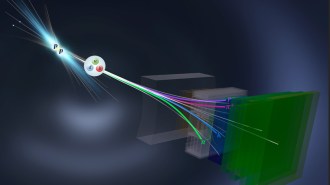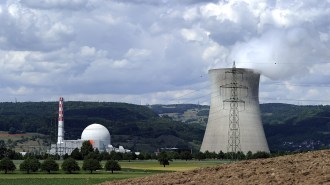Ghostly antineutrinos could help ferret out nuclear tests
But building detectors up to the task would be a huge undertaking

NUKE SPOTTER The Super-Kamiokande detector (shown) in Hida, Japan, could catch antineutrinos from a powerful nuclear blast about 100 kilometers away, scientists calculated.
Kamioka Observatory/ICRR/University of Tokyo
- More than 2 years ago
Rogue nations that want to hide nuclear weapons tests may one day be thwarted by antineutrinos.
Atomic blasts emit immense numbers of the lightweight subatomic particles, which can travel long distances through the Earth. In general, the particles — the antimatter twins of neutrinos — are notoriously difficult to spot. But a large antineutrino detector located within a few hundred kilometers of a powerful nuclear explosion could glimpse a handful of the particles, scientists report in the August Physical Review Applied.
An antineutrino detector wouldn’t spot an explosion solely on its own, but would use seismic activity picked up by existing sensors to trigger a search for particles arriving from a suspected blast. It’s “a very smart and clever idea,” says physicist Patrick Huber of Virginia Tech in Blacksburg.
A global network of sensors already gathers detailed information about nuclear explosions by monitoring for telltale seismic activity and radioactive isotopes. In recent years, those sensors have revealed details of North Korean nuclear tests performed underground (SN: 8/5/17, p. 18).
But if those sensors were unable to confirm that a nuclear explosion occurred, spotting antineutrinos would eliminate doubt, says study coauthor and physicist Adam Bernstein of Lawrence Livermore National Laboratory in California. “If you see a burst of antineutrinos, there’s really no other way you could have gotten that,” he says, aside from an exploding star in the Milky Way (SN: 2/18/17, p. 24). Those stellar bursts are rare events unlikely to coincide with a seismic signature.
And while stealthy bomb makers might be able to contain an explosion’s radioactive isotopes or mask some of its seismic signals, there’s no way to stop antineutrinos from escaping. Neutrinos could also provide information about how powerful the explosion was and what type of nuclear weapon was used.
None of the existing antineutrino detectors, however, are big enough and in the right location to monitor North Korea. One of the biggest is the Super-Kamiokande detector, located in a mine in Hida, Japan. It’s filled with 50,000 tons of water and lined with sensors that detect light produced when antineutrinos interact in the water. If located within about 100 kilometers of a nuclear test site, a detector of this size could likely spot a 250-kiloton nuclear fission explosion.
A detector about 10 times bigger could spot such an explosion several hundred kilometers away. But building such large detectors wouldn’t be easy. “It’s not the kind of thing that’s going to be the go-to method for monitoring nuclear testing,” says physicist Kate Scholberg of Duke University.
Scientists are planning a beefed-up antineutrino experiment of that size called Hyper-Kamiokande, which would consist of two detectors, one in Japan and the other in South Korea. Hyper-Kamiokande’s main purpose is to study the physics of neutrinos. But, says study coauthor Rachel Carr, a physicist at MIT, the proposed South Korean detector is “actually big enough that it would possibly detect a few antineutrinos from a North Korean test.”







